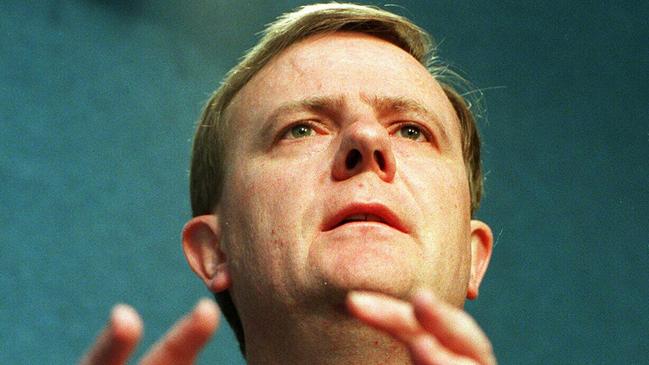Peter Costello joins call for simplified tax system
Peter Costello has warned that the tax system is sapping productivity, efficiency and competitiveness.

Peter Costello has joined business leaders in calling on the Morrison government to do more to simplify Australia’s tax system, with the former treasurer saying there was a “real economic benefit” to having fewer rules and taxes.
As the Coalition prepares to announce a budget surplus within the next six months, for the first time in 12 years, business is demanding a rethink on the “increasingly complicated” tax system and pushing for an ambitious economic agenda.
Mr Costello, who waited until delivering his first budget surplus in 1997 before introducing arguably the biggest tax reform, the GST, warned that the tax system was sapping productivity, efficiency and competitiveness.
“There’s still a lot that can be done in the simplification. You’ve got to remember in tax, in my view, there’s always a trade-off between simplicity and fairness,” he said ahead of the release of the 1998-99 cabinet records on Wednesday.
“People will say, ‘Oh, one rule, it’s not really fair’, but our argument was we’ll have one rule but we’ll do the fairness through the payment system. We won’t let the fairness complicate the tax system, I’d recommend that.
“The complexity is growing all the time in tax and there’s a real economic benefit in simplicity in taxation … Compliance is a huge cost of tax.”
While Mr Costello conceded no government could ever again do anything as big as the GST, which affected every Australian with a “10 per cent tax on everything”, he said current governments had to keep working on income tax rates to minimise the impact of bracket creep.
Australian Chamber of Commerce and Industry chief executive James Pearson, who stressed it was important for the government to remain committed to a surplus, recognised that tax reform in Australia was historically challenging.
The “obvious simplification” for the business sector was to have one company tax rate of 25 per cent. The Turnbull government was forced to dump plans for a 25 per cent rate for big business, managing only to legislate a lower rate for businesses with an annual turnover of up to $50m.
“The parliament has to have the political appetite for that change and it’s obviously not there at the moment. It is something we will need to do at some stage,” Mr Pearson said.
“If we were to have a wholesale review of the tax-and-transfer system, which I recognise is a significant project, that is the way we could build broader community support for changes to tax as well as the payments the government makes, particularly on welfare benefits.”
Mr Pearson said extending the instant asset write-off, which allows small and medium-sized enterprises below the $50m threshold to claim the full value of an asset that costs up to $30,000 as a tax deduction, would help “turbocharge” the sector.
Australian Industry Group chief executive Innes Willox said tax reform did not just mean cutting tax rates but a proper examination and rollout of “significant” measures. He nominated simplifying the company tax rate, “which is becoming well out of whack with our competitors”, bringing forward the second round of personal income tax cuts and policies to encourage business investment as possible reforms.
“Without an appetite for substantial tax reform to boost our productivity and overall economic performance, we risk just fiddling around the edges,” Mr Willox said.
“There is room still for we believe to bring forward the next round of personal tax cuts in due course because they do give households more spending power, how they use it is up to them. We’d say the experience of the last round of tax cuts makes you think perhaps the bigger bang for buck would come through corporate tax measures.”
A government spokesman said expanding and increasing the instant asset write off for over 3 million businesses, its personal income tax reforms and a single touch payroll for employers reporting to the Australian Taxation Office were a sample of tax simplification measures implemented by the Coalition.
The government has also requested the Board of Taxation review Australia’s capital gains tax rollovers and associated provisions and was considering the board’s simplification recommendations following a review of the fringe benefits tax compliance cost.
Stage two of the government’s personal income tax relief plan will see the top threshold of the 19 per cent tax bracket increased from $41,000 to $45,000 and the low-income tax offset increased from $645 to $700.
The final stage, to be fully implemented in 2024-25, will abolish the 37 per cent tax bracket and introduce a 30 per cent tax rate for Australians earning between $45,000 and $200,000.



